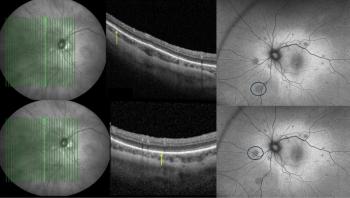
Corneal ring segments proving their worth
Ferrara corneal rings are a useful tool in the treatment of keratoconus but long-term stability still needs to be established.
Ferrara corneal rings are a useful tool in the treatment of keratoconus but long-term stability still needs to be established, according to Akef El Maghraby and colleagues from the Magrabi Eye and Ear Center, Jeddah, Saudi Arabia.
In a prospective, non-comparative study, 100 corneas with keratoconus were implanted with Ferrara intracorneal ring segments. Uncorrected visual acuity (UCVA), best corrected visual acuity (BCVA), spherical equivalent, cylinder power, topographic average K readings and cylinder were measured preoperatively and at one week, one, three, six and nine months postoperatively.
By the first month, all parameters had improved significantly and 92% maintained or improved their BCVA. No case required explantation and neither cone nor the depth of the segments affected the outcomes. Results were stable through the duration of follow-up.
The results suggest that intracorneal ring segments are effective but more long-term follow-up is required to establish stability.
Newsletter
Get the essential updates shaping the future of pharma manufacturing and compliance—subscribe today to Pharmaceutical Technology and never miss a breakthrough.













































